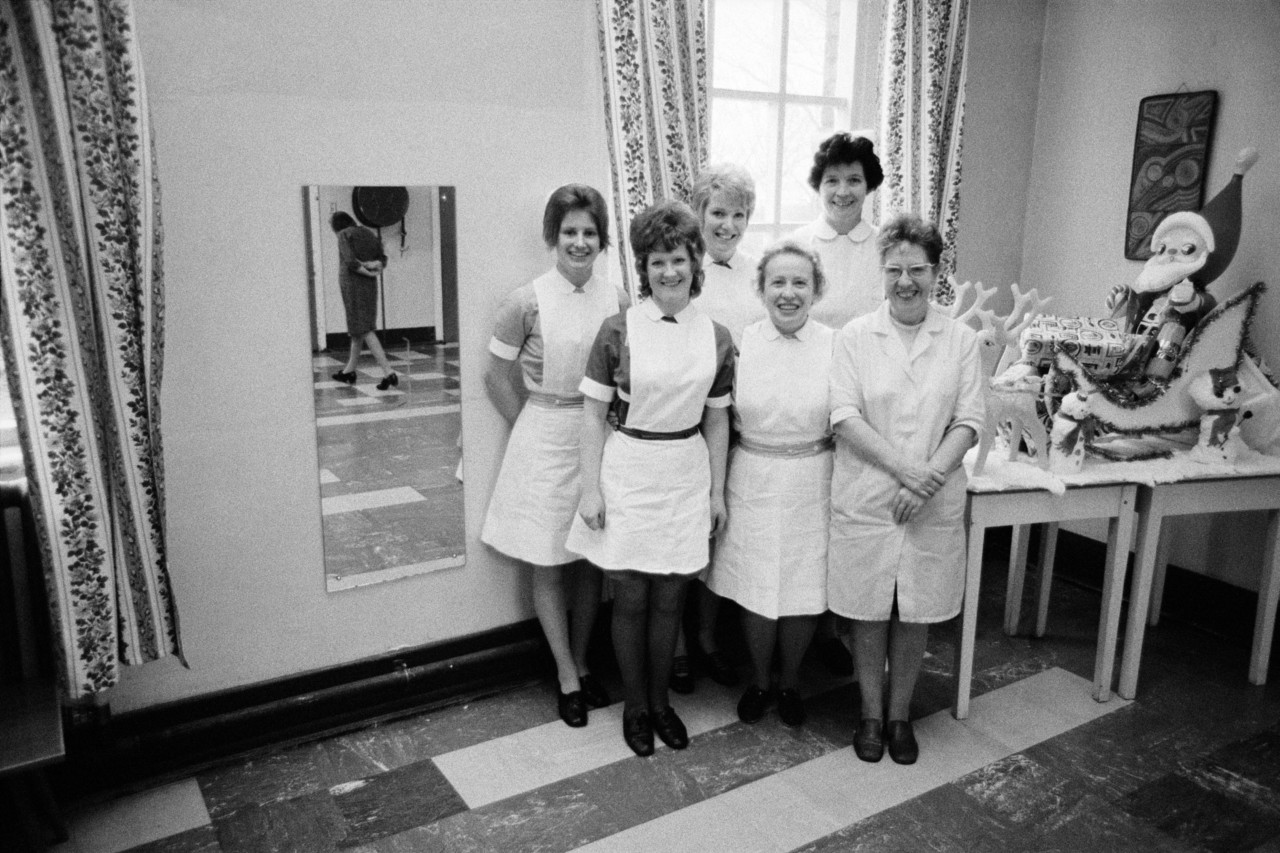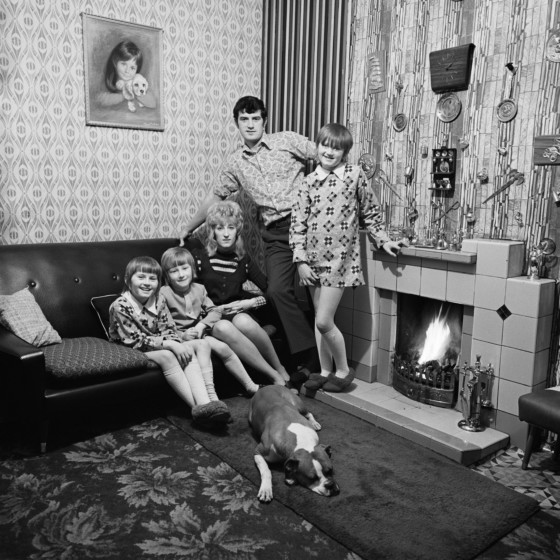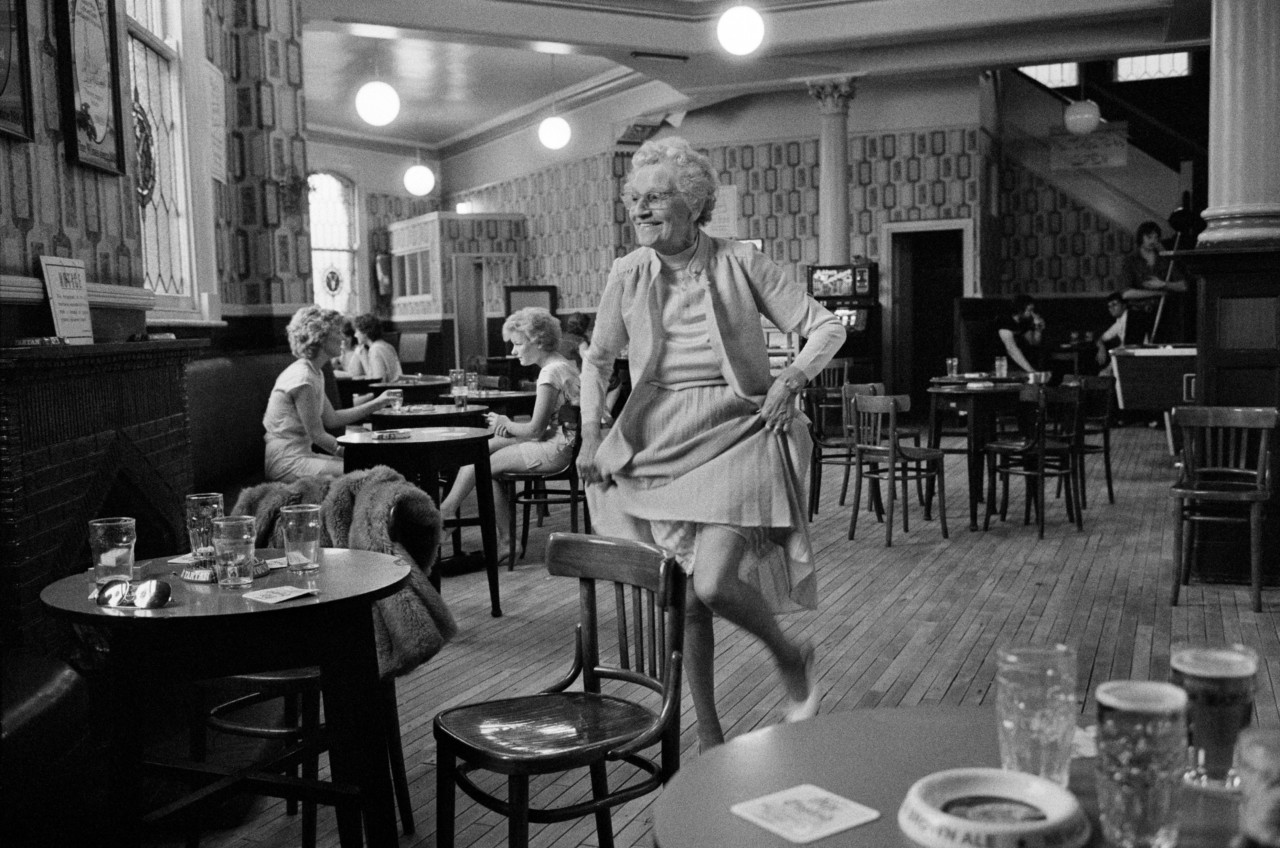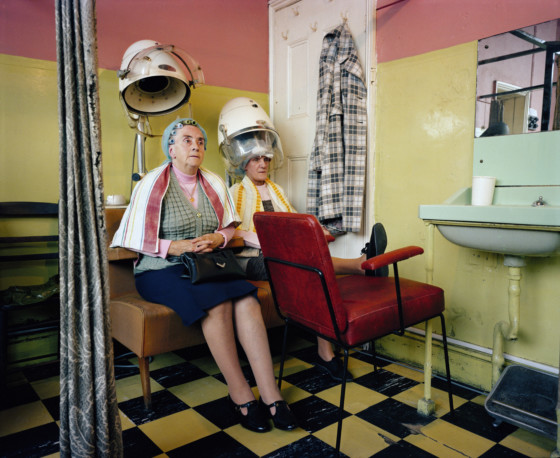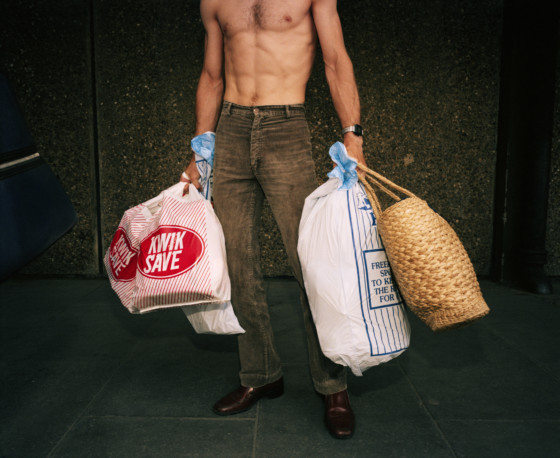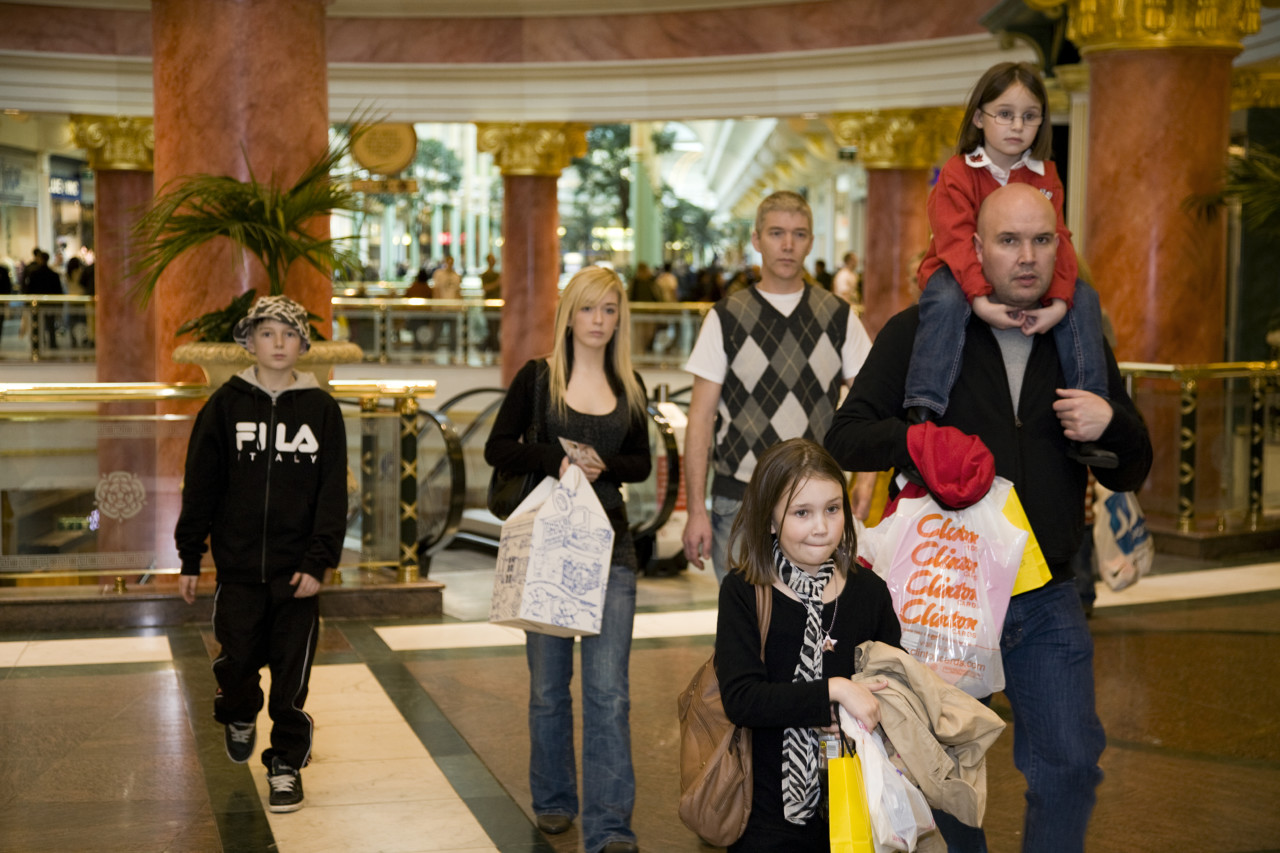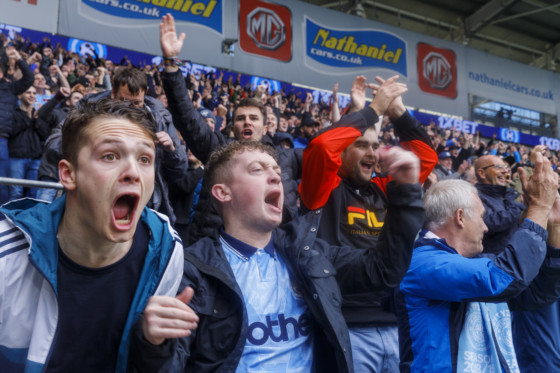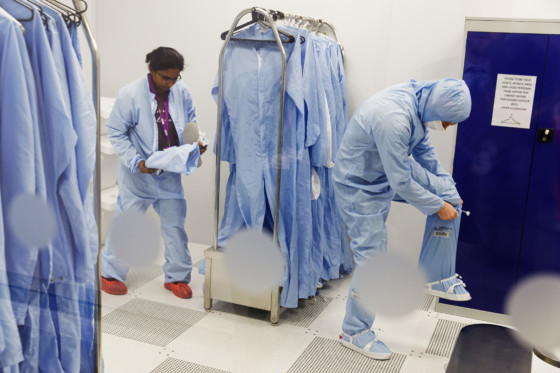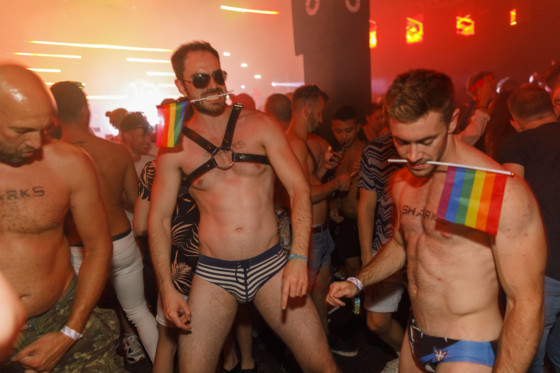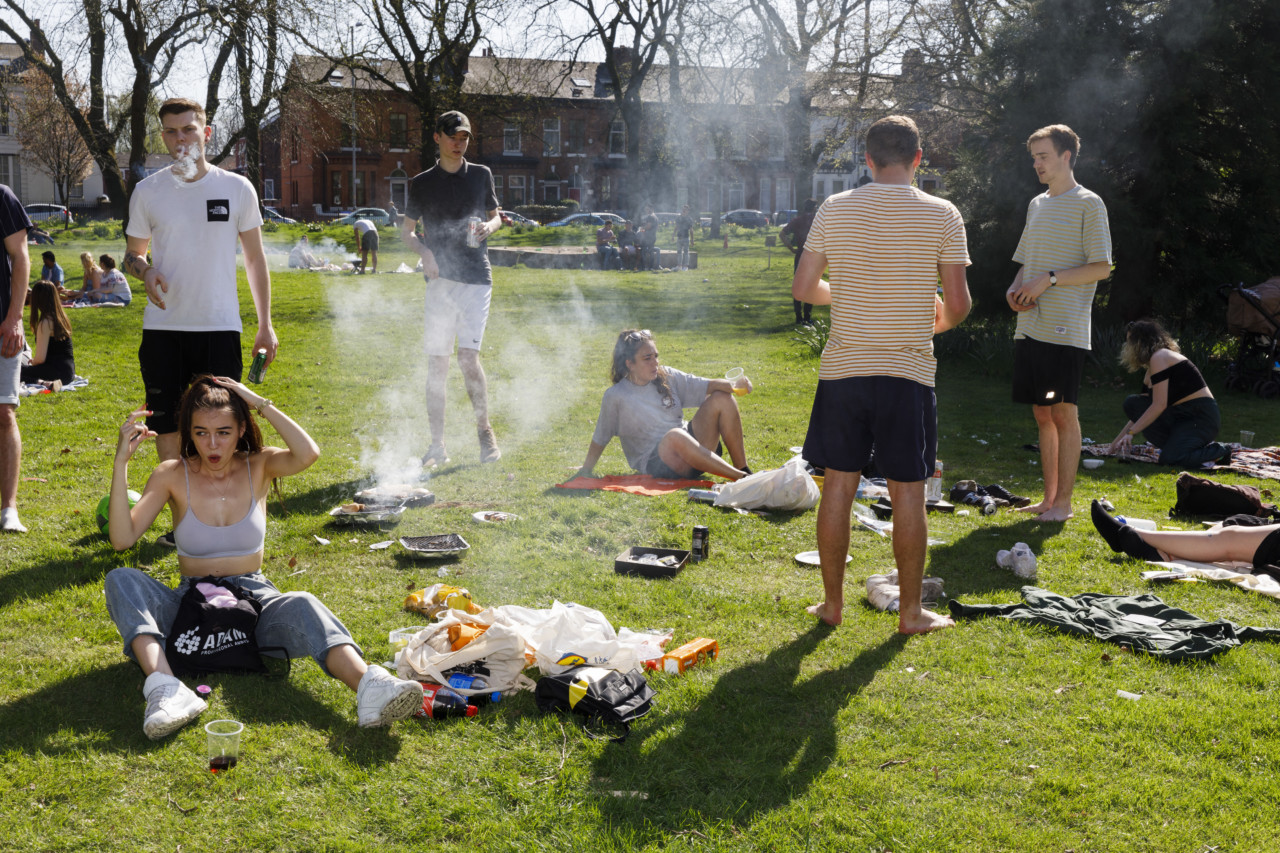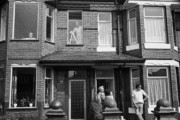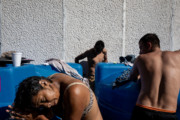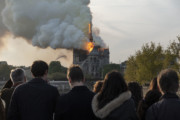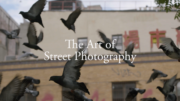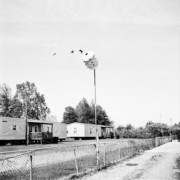Martin Parr’s Manchester
The Magnum photographer captures the changing face and enduring spirit of the city from the 1970s to the present day
Martin Parr first came to the city of Manchester as a student in 1970, leaving behind the security of sleepy suburban Surrey in the South East of England for the world-renowned hub of industry, sport, and music. Training both his technical skills and photographic eye, he turned his lens on the people of his new home, developing interests that would come to define his practice, such as cultural idiosyncrasies, class and British identity.
In his poem This is the Place, Mancunian poet Tony Walsh, a.k.a Longfella, eulogized Manchester’s rich cultural history, industrious spirit, and sense of civic pride when he wrote: “…we make brilliant music; We make brilliant bands; We make goals that make souls leap from seats in the stands; And we make things from steel and we make things from cotton; And we make people laugh, take the mick summat rotten.”
The city where suffragette Emmeline Pankhurst hailed from, where the industrial revolution gave birth to a new kind of economy and ushered in the development of surrounding towns, and where the first computer was made has been through many changes. Former industrial areas struggled, and new industries in science and media thrived, but what five decades-worth of Parr’s photography in the city shows is how something of Manchester’s unique sprit has endured.
A new exhibition, commissioned by Manchester Art Gallery, draws Parr’s myriad works made in the city – including a 2018 commission – together for the first time. From his early black and white photographs made there in his youth, to 1980s studies of modern consumer culture that now seen nostalgic, and contemporary depictions of Manchester as a center for industry, media, and culture, the senior curator Natasha Howes has pulled together a curation that captures the personality of the city, and also acts as a pit-stop tour through the development of Parr’s practice.
Here we look at some of these key bodies of work, as represented in this exhibition and the accompanying book, Return to Manchester.
"Suddenly I found something I wanted to articulate. That’s when my photography really took off"
- Martin Parr
Prestwich Mental Hospital 1972
Prestwich Mental Hospital was Martin Parr’s first cohesive documentary project, made whilst he was studying at Manchester Polytechnic. Parr’s first visit to Prestwich was to see a friend’s brother, who had been admitted. He was so taken with the place that he decided to go back and seek permission to photograph there. “Visually it was very striking. The whole atmosphere…you just knew there was scope there. When you’re a nineteen-year-old photographer, you have aspirations, but it’s difficult to know actually what to say. But suddenly I found something I wanted to articulate. That’s when my photography really took off.”
“The images demonstrate Parr’s engagement with the patients and how he was able to build a rapport so they felt comfortable having their photographs taken, a few even playing up to the camera. What could have been quite bleak, institutional images in fact reveal the humanity which Parr captured even in the very early stages of his career,” writes Natasha Howes.
June Street with Daniel Meadows, 1972
Parr and his fellow student Daniel Meadows wanted to find the ‘real’ Coronation Street. The actual road on which the TV soap was based had been demolished but they found a similar row of terraces nearby in June Street. This street was also due to be flattened and the images capture a community on the verge of disappearing. Parr and Meadows asked the residents if they could photograph them in their front rooms.
“Here we see the groups smiling, something which Parr later discouraged as it encourages us to connect with the pictures emotionally rather than engage with the visual element so the images,” writes Howes, adding, “The series has become a document of family life in Salford in the early 1970s, with family groups gathered around fireplaces or TVs surrounded by ornaments, pictures, patterned wallpaper and carpets. This was where Parr’s interest in kitsch and decoration developed and the start of his lifelong fascination with the ordinariness of everyday life.”
Bad Weather, 1981
Bad Weather is a charming survey of the people of Britain and Ireland going about their lives in bad weather, a recognized national obsession. Many of the images were captured with an underwater camera and flashgun, as Martin Parr’s Leica was prone to water leakage. Several Manchester images from Bad Weather feature in the Manchester Art Gallery curation, symbolizing the city’s famously drizzly skies.
The use of flash allowed Parr to capture the falling rain which would otherwise be almost invisible and meant that the weather came to the fore within the image.
Yates’s Wine Lodge, 1982–3
During 1982 to ’83, Parr explored the very British tradition of drinking in pubs, choosing to focus on a chain of public houses founded in the Manchester satellite town, Oldham, in 1884. Yate’s Wine Lodges are the oldest pub chain in the UK, and at the time of Parr’s setting about photographing every branch, most of them were in the North West of England. Parr was attracted to both their design and the rituals of drinking and socializing, which took place inside. He said, “the unspoiled, original wine lodges, with their high ceilings and bare floorboards, their pillars and rails for propping yourself upright, seem clearly designed for the determined and joyless business of taking the quickest route to oblivion.”
“The day in the life of a pub is captured, with people drinking on their own or with friends, the queueing system of drinkers forming an orderly line behind a rail and how the atmosphere changes depending on the number of drinkers,” explains Howes, commenting, “The images aren’t posed and show Parr’s interest in gestures, glances, movement and composition, which looks forward to his more familiar contemporary color reportage work.”
Point of Sale, Salford, 1986
Now working in color, Parr was commissioned by the Documentary Photography Archive to document the nation’s changing shopping habits. Small local salons, frozen ready-meals in supermarkets and home shopping seemed thrillingly modern at the time, but look retro and nostalgic from a contemporary perspective. “The term shopaholic became popular. Parr’s images are wistful for the past but are also imbued with his excitement about the future,” wrote Howes.
“The themes and tropes of this series became subjects that Parr would return to later in his career. Here he gets closer to his subjects than before which has the effect of making us feel like we are there in the picture, not just witnesses from afar. Formally Parr concentrated on color, pattern and repeated tones within single images and also repeated across the series. His use of color film, with its muted tones, makes the work feel a product of its time to our contemporary eyes.”
"His use of color film, with its muted tones, makes the work feel a product of its time to our contemporary eyes"
- Natasha Howes
Guardian Cities, 2008
In 2008 Parr was commissioned by The Guardian newspaper to produce 10 exclusive, print photo-essay supplements, documenting 10 British cities: Manchester, Brighton, Liverpool, Bristol, Cardiff, Edinburgh, Belfast, Newcastle, Cambridge and Leeds. For the Manchester leg of this work, Parr was able to investigate how the city had changed since he first knew it, visiting the cities up-and-coming areas like the Northern Quarter and Salford Quays, and going back to surrounding areas, including Moss Side and Failsworth.
When the work was published, Parr remarked on the changes to Manchester since his last visit, the dominance of the supermarket over independent neighborhood shops and the regeneration that had followed the 1996 IRA truck-bombing, which promoted remodelling of the city center. “Life moves on, and many of the people and stories I encountered during my brief visit showed me that, while they can build as many supermarkets and hotels as they like, there is still a natural warmth to be found on the streets of Manchester,” he said.
Manchester, 2018
In 2018, Parr returned to Manchester once again to create a contemporary portrait of the city and its people, commissioned by Manchester Art Gallery itself. He visited shopping centers, barbers, a mosque, cafes, markets, a factory, a football match and the city’s renowned gay village, and captured the city’s many new industries, from scientists undertaking groundbreaking research at the University of Manchester, to BBC programs in production at Salford’s Media City.
“This series reveals a diverse, inclusive and multicultural city and the breadth of activity which takes place,” observed Howes. “It uncovers people’s passions, skills, relationships, idiosyncrasies – celebrating the humanity of the everyday.”
"(The series) uncovers people’s passions, skills, relationships, idiosyncrasies – celebrating the humanity of the everyday"
- Natasha Howes
Return to Manchester is at Manchester Art Gallery until April 22, 2019. More information about the exhibition here. You can buy the book, which features over 200 images of Manchester by Martin Parr, here, or by calling Manchester Art Gallery on +44 (0) 161 235 8832.
Martin Parr features in Magnum’s first online course, The Art of Street Photography. For more information and to begin learning about street photography from the likes of Parr, Bruce Gilden, Susan Meiselas, Richard Kalvar, Carolyn Drake, Peter van Agtmael and Mark Power, go here.






